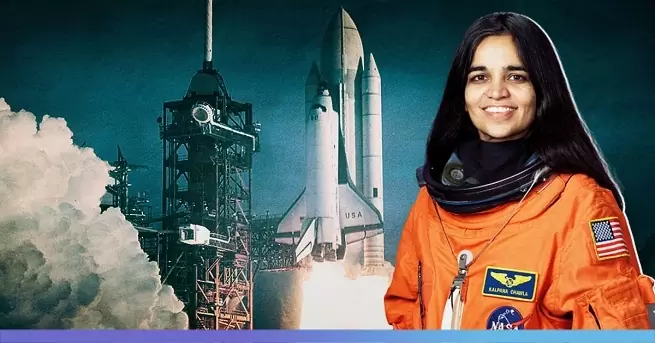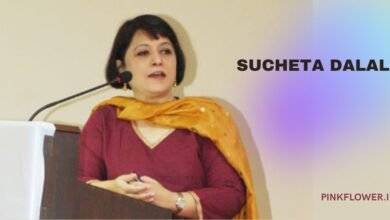
I believe that everyone dreams of going to space as a child. The first India-born female astronaut who made India proud by conquering space. Let’ see at the story of this brave daughter of India. She proves path from the dreams to success is exist! Because on this mission she was the first!
Every girl’s motivation, Kalpana Chawla. Kalpana was born on 17 March 1962 in Karnal, Haryana. The youngest of the four sibling was lovingly called Montu for the first few years. At the time of school admission, her name was chosen to be Kalpana, meaning imagination. After completing her schooling from Tagore Baal Niketan Senior Secondary School, & Dayal Singh College Kalpana travel to the Chandigarh for higher studies.
Her date of birth was falsified by her family to 1 July 1961, to allow her to become eligible for the matriculation exam. After getting a Bachelor of Engineering degree in Aeronautical Engineering from Punjab Engineering College, India, she moved to the Arlington United States in 1982. In her apartment, she met her life partner, Jean Pierre Harrison. They both have common interests like diving and flying, which got them closer. And by December of 1983, they were married.
Kalpna obtained a Master of Science degree in Aerospace Engineering from the University of Texas at Arlington in 1984. Chawla went on to earn a second Masters in 1986 and a PhD in aerospace engineering in 1988 from the University of Colorado Boulder. In 1988, Kalpana began working at NASA Ames Research Centre, where she did computational fluid dynamics (CFD) research on vertical and/or short take-off and landing (V/STOL) concepts. In particular, her work focused on understanding how air flows around an aircraft during flight and incorporating computers into the work. Much of Kalpana’s research is included in technical journals and conference papers.
In 1993, she joined Overset Methods, Inc. as vice president and Research Scientist specializing in simulation of moving multiple body problems. Chawla held a Certificated Flight Instructor rating for airplanes, gliders and Commercial Pilot licenses for single and multi-engine airplanes, seaplanes and gliders. After becoming a naturalized U.S. citizen in April 1991, Chawla applied for the NASA Astronaut Corps. She joined the corps in March 1995 and was selected for her first flight in 1997. Her first space mission began on 19 November 1997, as part of the six-astronaut crew that flew the Space Shuttle Columbia flight STS-87. Chawla was the first Indian woman to go in space.
She spoke the following words while traveling in the weightlessness of space, “You are just your intelligence.”
The shuttle made 252 orbits of the Earth in just over two weeks. Chawla was a mission specialist and prime robotic arm operator for the flight; the other astronauts on board were Kevin Kregel, Steven Linsey, Winston Scott, Takao Doi and Leonid Kadenyuk. The shuttle carried a number of experiments, including projects studying plant reproduction in microgravity and how materials behave in space.
In addition, Chawla used the robotic arm to deploy a satellite called SPARTAN 201, which was meant to study the outer layer of the sun, called the corona. However, the satellite malfunctioned and could not control its position upon deployment, according to NASA. Two other astronauts from the mission had to perform a spacewalk to recapture the satellite and the instrument never conducted any research.
After her first flight, Chawla said, “When you look at the stars and the galaxy, you feel that you are not just from any particular piece of land, but from the solar system.”
In 2000, Chawla was selected for her second voyage into space, to serve as a mission specialist on STS-107. The mission was delayed several times before finally launching on Jan. 16, 2003.
During the 16-day flight, the crew completed more than 80 experiments, working a strenuous shift schedule to ensure that the research never stopped, according to NASA. Among other work, the STS-107 crew tested technology that NASA wanted to recycle water on the young International Space Station. Experiments developed by elementary school students from around the world analysed how insects and fish respond to spaceflight; another suite of experiments studied the sun.
In particular, the flight carried a large pressurized chamber called the Spacelab research module inside the shuttle’s payload bay. The experiments completed in the Spacelab module focused on biological and health sciences.
Between her two missions, Chawla logged 30 days, 14 hours, and 54 minutes in space.
On the morning of Feb. 1, 2003, the space shuttle returned to Earth, intending to land at Kennedy Space Centre. But as the shuttle passed through Earth’s atmosphere, hot gas streamed into the shuttle’s wing where a briefcase-sized piece of insulation had broken off during launch and damaged the thermal protection system, the shield that protects it from heat during re-entry.
The unstable craft rolled and bucked, pitching the astronauts about. Less than a minute passed before the ship depressurized, killing the crew. Also on board were Rick Husband, Laurel Clark, Ilan Ramon, David Brown, William McCool and Michael Anderson.
The shuttle broke up over Texas and Louisiana before plunging into the ground. The accident was the second major disaster for the space shuttle program, following the 1986 explosion of the shuttle Challenger.
AWARDS: Posthumously awarded:
- Congressional Space Medal of Honour
- NASA Space Flight Medal
- NASA Distinguished Service Medal



